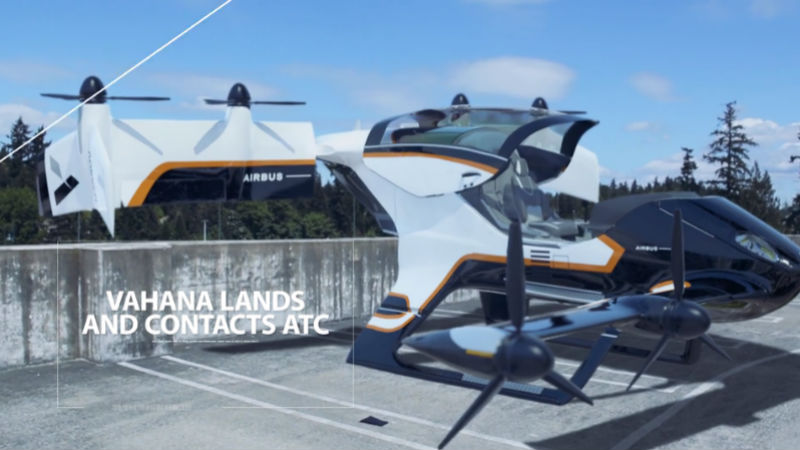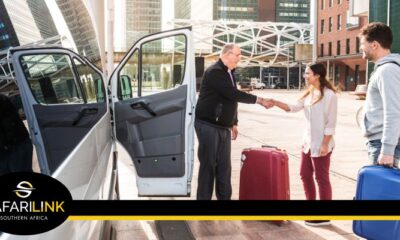Around the Web
Uber of the Sky is on the Way [Video]
Airbus is making flying cars a reality, and it’s coming sooner than you think!

Anyone that has the profound burden of commuting to and from work for anything more than 20 minutes, can probably sympathise with the dread that daily travel fill many urban employees with.
Considering the rapid development of massive cities, more and more people are joining that almost endless line of cars on the ever-expanding webs of highways all around the world. There may be a potential savior on the horizon, though, for many commuters in some of the world’s most congested cities: flying cars. Rather than being a clever gimmick in the latest sci-fi movie, Airbus is actually testing whether getting us up off the ground and into the air actually makes sense as a viable method of transport.
Their experimental project is named “Vahana”, a Sanskrit word meaning; “something that carries”, and is scheduled to undergo its test phase some time this year. Airbus bills their project as a way to “open up urban airways by delivering the first certified, electric, self-piloted vertical takeoff and landing (VTOL) passenger aircraft”. While not exactly a flying car in the sense of strapping wings to your VW Golf, the idea is essentially to have self-flying drones that will decrease how much road traffic is in a given area.
Some might ask “Why are they doing this?” and the simple answer isn’t “because it looks really cool” (even though it does), but rather that “it makes financial sense”. While that sounds counter-intuitive, there’s an easy way to explain why that’s the case. Sitting in traffic for over 60 minutes doesn’t just frustrate commuters, it also costs companies, and entire economies, a massive amount of money. From the company perspective every minute spent in traffic is productivity they lose, and in the case of megacities like London or Sao Paolo, the value lost can be as high as £31 billion each year. When looking at those figures it becomes clear that it may actually be cheaper to invest in an innovative new technology, like self-flying transport, than to keep losing that money by having people stuck in traffic.
A³, the subsidiary for Airbus tasked with getting this project to a viable stage, is making serious headway but isn’t quite ready to have us all buzzing around like the Jetsons quite yet. A³ CEO Rodin Lyasoff says that while the basic avionics and battery technology is sophisticated enough to be incorporated in their vehicles, the actual obstacle they’ve got is implementing sense-and-avoid technology that can reliably keep people safe in the air. While self-driving cars are already a reality, the technology necessary to keep a car on the road from getting into accidents is likely simpler than what would be required for a commercial passenger drone to safely deliver passengers all over a city filled with buildings. That being said, the company appears confident of the practical aplication of their project, and should have more concrete evidence of its potential by year’s end.
The main question now becomes: will people trust and use it? Many years ago the public was highly skeptical of Henry Ford’s attempts to get us all into cars, will A³ experience similar resistance, or are you ready to be chauffeured across skyscraper filled skies in an automated drone?
Concept Art for Project Vahana:
















